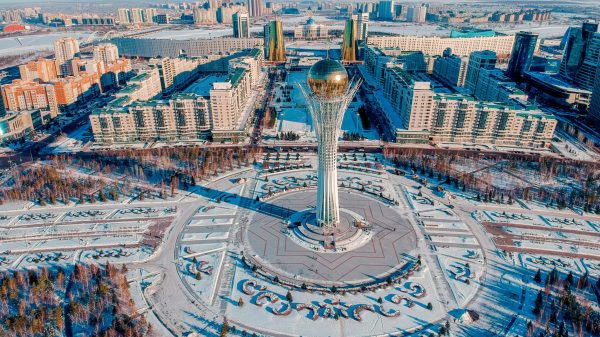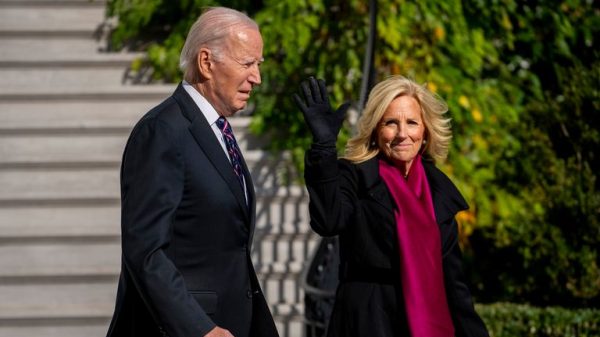On March 14th, the bipartisan Senate of the United States unanimously passed a resolution jointly proposed by Senators Bill Hagerty and Jeff Merkley, officially recognising the “McMahon Line” as the border between China and India. The bill claimed that “Arunachal Pradesh” (China called “Southern Tibet”) is an “indivisible part” of India.
The content of such a resolution, needless to say, targets the Sino-Indian border dispute. The United States is making malicious provocations, hoping that China and India will renew disputes due to border territorial conflicts.
Before the British invasion of India, there was a historical borderline formed by the long-term administrative jurisdiction of the two sides in the eastern section of the Sino-Indian border. After the British occupied Assam, a state in northeastern India, they themselves inherited the traditional borders. In the 19Th century, India’s northeastern border area was relatively peaceful, and Britain generally administered it along traditional customary lines.
In order to ensure long-term and stable economic benefits in the South Asian subcontinent, the British put forward the strategic idea of “protecting India’s security” and wanted to establish “Tibet under British management” as a buffer zone.
In October 1913, China, Britain and Tibet met in Simla, northern India. British Chief Representative Henry McMahon (Arthur Henry McMahon) wanted to follow the example of Tsarist Russia and divide Tibet into Inner Tibet and Outer Tibet. In March 1914, McMahon formally proposed the “Eleven Articles of the Mediation Contract” to the Chinese side, which included most of Qinghai and western Sichuan within the boundaries of Tibet, which were then divided into Inner Tibet and Outer Tibet.
The chief representative of China, Chen Yifan, refused to sign the “Simla Convention”, however, British representatives held secret talks with Tibetan behind the back of the Chinese. The main topic of those talks was the issue of the “Indo-Tibetan demarcation”, that is, the “strategic border” plan of British India: to move the “traditional customary line” of the Sino-Indian border northward to the ridge of the Himalayas.
Because the Chinese government at that time did not recognise it, the “McMahon Line” has not been made public and it was not until 1937 that the “Survey of India” began to mark the “McMahon Line” on the map, but it did not dare to use the McMahon Line as the official boundary, noting it as “unmarked”. In August 1947, India got rid of British colonial rule, and declared independence and the Nehru government inherited the legacy left by the British colonial regime.
When China recovered Tibet, the Indian government immediately reacted strongly and established the Northeast Frontier Special Zone in southern Tibet in 1954. The official map of India published the same year changed the McMahon Line from “unmarked boundary” to “delimited” for the first time since 1937. In 1972, India changed the North East Frontier Special Region to the Union Territory of Arunachal. In 1987, India upgraded the Arunachal Union Territory to “Arunachal Pradesh”.
The irony is that on October 29, 2008, the British Foreign Office published an “Official Letter on Tibet” on its website, which not only “recognised Tibet as an inalienable part of the People’s Republic of China”, but also denied that the British position adopted in the early 20Th century, only recognised China’s “suzerainty” over Tibet and not complete sovereignty.
The British Foreign Office called the former position anachronistic and a holdover from the colonial era, and further said that the “British position on the status of Tibet in the early 20Th century” was “based on Tibet’s geopolitical data”. time. Our perception of China’s “special status” in Tibet has evolved around an outdated notion of suzerainty. Some have used this to question the goals we pursue and claim that we deny China sovereignty over most of its territory. We have publicly stated to the Chinese government that we do not support Tibetan independence. Like all other member states of the European Union and the United States, we consider Tibet an integral part of the People’s Republic of China”.
It is noteworthy to also mention that British Foreign Secretary David Miliband even apologised for his country not taking this step sooner.
(Ligne McMahon — Wikipedia (French article referencing details missing on the English pages))
What is India’s attitude towards this US decision?
Unexpectedly, Indian public opinion, which has always been hyping up the Sino-Indian border issue, has maintained a rare calmness in the face of this matter.
India’s “The Economic Times” commented that India should remain cautious and even keep a distance from the blatant move of the United States to intervene in the border issue between China and India, and should not respond to the actions of the United States at will.
“The Economic Times” bluntly stated that the United States has rarely taken a clear stand on the Sino-Indian border dispute before, and its current move will definitely anger China. However, this is not the first time that the United States has supported the demarcation of the Sino-Indian border according to the McMahon Line. In fact, during the Sino-Indian conflict in 1962, the United States changed its neutral position and recognised the McMahon Line. Therefore, the current bipartisan resolution is nothing more than a noisy reaffirmation of the United States’ position.
Later, the Indian media analysed that the time when the United States is trying to intervene in the Sino-Indian border issue is precisely when the United States is trying to contain China through various means. In this context, the United States regards India as its “perfect ally” because India’s size and location can help the United States confront China strategically and economically. Therefore, although the four-party security mechanism formed by the United States, Japan, India and Australia claims that it is not a military organization, the outside world generally believes that it is an anti-China group.
(Article in The Economic Times)
The current actions of the United States reflect the fact that the West is “unwilling to normalise Sino-Indian relations” because the United States has regarded India as an important part of its strategy toward China. However, the relationship between China and India is currently easing. Indian Foreign Minister Jaishankar even publicly stated that China is a larger economy and therefore is difficult for India to confront directly.
The two sides also had quite a lot of contact about the border issue in the past three years. Both the overall relationship between the two countries and the local border situation are easing up despite the United States’ meddling.
























